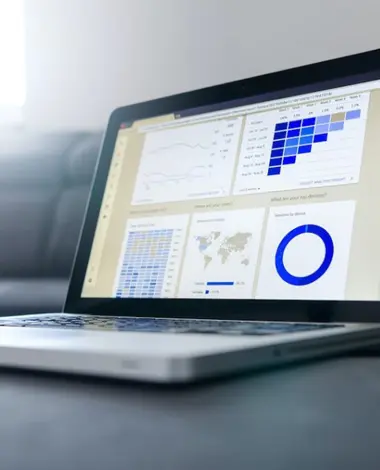What if you’ve been doing all the right things like investing in SEO—and paid and social media ads—and traffic to your e-commerce store seems satisfactory, but your sales aren’t reflecting those efforts?
You’ve reached a plateau where driving more visitors to your site isn’t the answer. What could make a difference is to maximise the value of the traffic you already have. This is where Conversion Rate Optimisation (CRO) comes in. Chances are you’ve already optimised your website’s UX, A/B tested your call-to-action (CTA) buttons to ensure they are compelling, streamlined your checkout process to reduce cart abandonment, and ensured that your website is mobile-responsive. In today’s competitive e-commerce landscape, these are often just the basics of CRO. So what lies beyond?
Advanced conversion rate optimisation begins with data-driven website reengineering to drive conversions. This entails an understanding of exactly how users are interacting with your site towards identifying friction points you didn’t anticipate. Another broad technique is to leverage data to personalise the shopping experience in real-time, anticipating customer needs before they articulate them.
This level of sophistication is now not a luxury but a necessity for e-commerce businesses looking to achieve peak performance. Let’s take a look at three advanced e-commerce CRO strategies:
Heatmaps and session recordings visually analyse user behaviour, identify roadblocks, and provide insights into the why behind your conversion rates.
Advanced A/B testing strategies move beyond simple A/B tests and implement sophisticated experimentation frameworks that can help optimise across the entire customer journey.
Predictive analytics and AI for personalised, real-time CRO create tailored experiences that maximise conversions literally in real time.
Heatmaps and Session Recordings: Unveiling User Behaviour
Towards e-commerce CRO, you’d need to understand why users are doing what they are doing on your website. Perhaps they’re getting stuck at a certain point, missing crucial information? Are they confused by the navigation? Advanced CRO in e-commerce goes beyond guesswork and dives into the reasons for user behaviour. Two powerful conversion rate optimisation tools we’ll look at are heatmaps and session recordings.
Heatmaps: Seeing Where User Attention Flows
Heatmaps help you visualise where users are focusing their attention while they’re on your web pages. They use colour gradients to represent user engagement, highlighting “hot spots”—where users interact more—and “cold spots,” where they aren’t showing much activity. You could think of it as an X-ray of user attention that reveals patterns and opportunities for optimisation.
There are several types of heatmaps, each of which offers unique perspectives on user behaviour.
Click heatmaps are the basic type. They help understand user intent by “looking” at where they are clicking; “hotter” colours, as we mentioned, indicate areas with more clicks. This is valuable in many ways:
- Optimising Call-to-Action (CTA) Placement: Are your primary CTAs in high-click zones?
- Improving navigation and menu structure: Are users inadvertently clicking on elements they don’t intend to? Such behaviour could indicate confusing navigation or misleading design elements—an image that appears to be clickable, for instance, or if attempts to select from a drop-down result in clicks outside the drop-down.
- Identifying engagement with key content: Are users clicking on product images, descriptions, or key features? Click heatmaps confirm (or otherwise) that users are interacting with the elements you want them to engage with most.
Scroll heatmaps reveal how far down users scroll on your pages before navigating away. This is crucial for understanding content consumption and ensuring vital information isn’t hidden way down the page. Scroll heatmaps help with:
- Optimisation of content placement on long pages: For product pages, landing pages, and blog posts, scroll heatmaps pinpoint where users typically drop off. This data tells you where to position your most important content such as key product benefits and compelling offers.
- Refining page length and structure: If users consistently drop off very early on a long page, it might indicate the page is too lengthy or the initial content isn’t engaging enough. Scroll heatmaps can prompt you to restructure and condense content.
Hover heatmaps (or mouse movement heatmaps) help infer areas of interest. They track mouse movements across the page. While less definitive than click heatmaps (hovering doesn’t always equate to intent), they can still provide supplementary insights—particularly into reading patterns and areas of focus.
Session Recordings: Observing Real-Time User Website Navigation
While heatmaps provide an aggregate visual overview, session recordings offer granular insights. They allow you to observe individual user navigation, capturing mouse movements, clicks, scrolls, and form interactions. Such an “over-the-shoulder” view reveals potential points of friction and confusion. Session recordings help you:
- Identify UX friction points by observing user hesitation, repeated clicks, erratic scrolling, or signs of confusion to pinpoint usability issues like unclear navigation, broken elements, or unexpected behaviour.
- Uncover subtle UI/UX issues by detecting minor but impactful design flaws that heatmaps might miss—such as ambiguous buttons, unclear form fields, or poorly timed pop-ups.
- Optimise the checkout process and reduce cart abandonment by analysing checkout flows, identifying drop-off points, form abandonment, and confusion—which allows for streamlining, step removal, and procedure clarification.
Combining heatmaps’ overview with session recordings’ granular perspective enhances understanding of user behaviour. These conversion rate optimisation tools transition you from guesswork to data-driven optimisation that aligns your website with user needs and expectations.
Advanced A/B Testing Strategies
If you’re only running basic A/B tests—comparing just two variations at a time—you might be throwing away significant optimisation potential. Standard A/B tests are essential—but to unlock the next level of conversion gains, you need to explore more sophisticated methods.
To elaborate: Basic A/B testing is like comparing apples to oranges—valuable but limited to a direct, one-to-one comparison. Advanced strategies allow you to dissect the entire fruit basket—understanding not just which fruit is preferred overall, but which combination of fruit qualities (sweetness, tartness, texture) appeals most to different palates.
Let’s look at three advanced A/B testing approaches that can enhance your experimentation and drive more impactful e-commerce CRO: Multivariate testing, bandit testing, and personalised testing leveraging AI.
Multivariate Testing (MVT): Optimising Page Element Combinations
Redesigning a landing page involves more than headline tweaks: Hero images, button colours, and layout matter. In this context, basic A/B testing requires time-consuming sequential tests—while Multivariate Testing (MVT) is a conversion rate optimisation strategy that tests multiple elements simultaneously to find optimal conversion-driving combinations.
Rather than comparing Version A and B, MVT breaks down the page into components and tests variations in combination. Say you’re testing your product page and:
- you have three options for the headline (A, B, C);
- you’re considering red, green, and blue for the CTA colour; and
- you’ve selected three images—X, Y, and Z—for the hero image.
MVT tests all 27 possible permutations at once, which provides three key advantages. It helps you:
- Discover element interactions: MVT might reveal, for instance, that headline C will perform best with hero image Y and a red button; this kind of insight is unattainable with A/B testing.
- Optimise high-value pages: MVT helps optimise pages like product and landing pages, where small improvements significantly impact revenue.
- Determine optimal layouts: MVT tests element arrangements and determines not only which elements work best, but how they should be arranged for maximum impact.
Bandit Testing: Agile Optimisation in Real-Time
Traditional A/B testing uses a fixed traffic split—often 50/50—regardless of performance, until completion. Bandit testing dynamically shifts traffic in real-time towards better-performing variations. “Winning” variations get more traffic while poorer ones get less—which maximises conversions during the test.
Bandit testing excels in two key scenarios:
- Time-sensitive campaigns: For short-term sales or promotions, bandit testing maximises conversions quickly by dynamically pushing traffic to better-performing variations.
- Checkout and funnel optimisation: When testing checkout flows, bandit testing rapidly identifies and promotes the most effective paths. If one variation shows fewer drop-offs early, it automatically receives more traffic—which improves overall conversion rates during the test.
Personalised Testing: AI-Powered CRO
The evolutionary step beyond testing variations for broad user segments is AI-driven conversion rate optimisation, which involves the dynamic generation of personalised experiences and ongoing evaluation of their effectiveness.
As you’re aware, AI and machine learning (ML) algorithms can analyse vast amounts of user data (browsing history, purchase behaviour and so forth) in real-time to create personalised interactions. Within a testing framework, this facilitates:
- Personalised website variations—such as purchase-based recommendations for returning customers and introductory content for new visitors—whose impact is measured based on individual behaviour and profiles
- Continuous adaptation, in which personalised website elements are adjusted and optimised based on user behaviour
- Personalised pricing, content, promotions and layouts, with their effectiveness continually evaluated and optimised for individual conversion potential
Supercharging E-commerce CRO with Predictive Analytics and AI
We’ve explored how heatmaps and session recordings offer valuable insights into past user behaviour, and how advanced A/B testing helps optimise based on data from controlled experiments. Let’s now look at the cutting edge of conversion rate optimisation: Predictive analytics and AI. With these technologies, you don’t just react to user behaviour; you anticipate it and tailor website experiences in real-time with unprecedented precision to maximise conversions.
Think of it as moving from descriptive and diagnostic to predictive and prescriptive analytics. Instead of understanding what happened and why, AI forecasts likely outcomes and prescribes optimal actions for individual visitor conversion.
AI and predictive analytics are revolutionising e-commerce CRO in the areas of AI-driven personalisation, predictive analytics for proactive intervention, and dynamic element adjustments.
AI-Driven Website Personalisation for Individual Visitors
In today’s digital landscape, generic experiences are ineffective; customers expect personalised experiences. AI-powered website personalisation dynamically adapts content, recommendations, and even UI elements to each visitor’s intent and context—which goes far beyond simple tactics like personalised greetings. Here are some examples of such personalisation:
Intent-based content adaptation: AI analyses real-time behaviour—pages viewed, searches, time spent, referrals—to infer intent and adapt content. For example, a user coming from a “beginner running shoes” ad might see beginner collections and articles while a returning user sees special-purpose shoes such as hiking shoes.
AI chatbots for proactive assistance: AI-powered chatbots—which are capable of natural, human-like conversation—improve conversion rates by offering proactive assistance. For example, a chatbot might detect hesitation signals (extended page stays, repeated scrolling); initiate context-aware assistance (discount offers, product FAQs, checkout guidance); and then provide conversion-focused support at critical decision moments.
Smart product recommendations: AI analyses user behaviour, purchase history, and product attributes to provide personalised recommendations. For example, a user looking on a camera lens page might see compatible bodies or accessories. Relevant recommendations of this sort improve product discovery, increase average order value, and drive conversions.
Predictive Analytics for Proactive CRO Interventions
Predictive analytics uses ML to forecast user behaviour by analysing historical and real-time data, which lets you proactively optimise the user experience before conversion roadblocks materialise. Here’s how it drives proactive conversion rate optimisation:
Purchase intent forecasting: ML algorithms analyse browsing history, engagement patterns, and demographic data to predict purchase likelihood—which goes beyond basic analytics. For instance, they can flag high-intent users for whom targeted conversion methods can be employed.
Drop-off risk identification: AI can detect behavioural signals of imminent session abandonment—and trigger real-time interventions like live chat support or purchase assistance to re-engage at-risk users.
Dynamic Element Adjustments
Adjusting website elements in real-time, based on immediate context and user behaviour, is another technique for proactive conversion rate optimisation. Examples include:
- Dynamic pricing: AI analyses real-time demand, competitor pricing, and user behaviour to optimise pricing for revenue and conversions.
- Personalised discounts for hesitant shoppers: As we’ve mentioned, AI identifies hesitation in real-time and delivers limited-time discounts to nudge conversions.
Predictive analytics and AI enable e-commerce businesses to shift from reactive to proactive, personalised CRO interventions.
In Conclusion
E-commerce businesses today must not only attract visitors but also master the art of converting them into loyal customers. Moving beyond basic tweaks and embracing advanced conversion rate optimisation strategies will become increasingly necessary for sustained growth.
The techniques we’ve explored represent the new frontier of CRO; they empower you to move from guesswork to data-backed precision.
The landscape of e-commerce conversion will continue to evolve, driven by advancements in AI and the increasing sophistication of analytics tools. Effective e-commerce CRO will be a key differentiator for businesses.
Table of Contents












